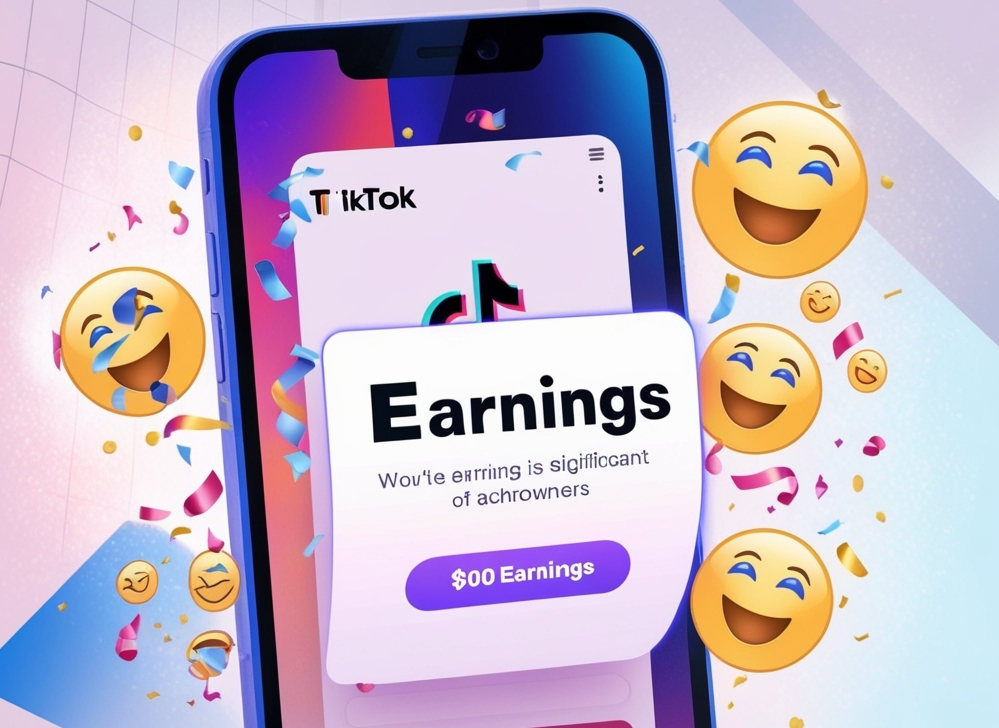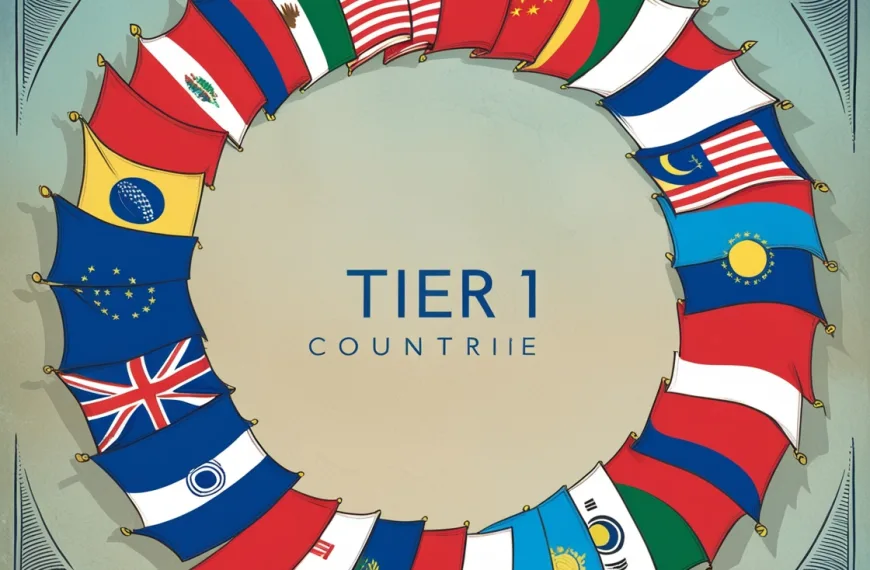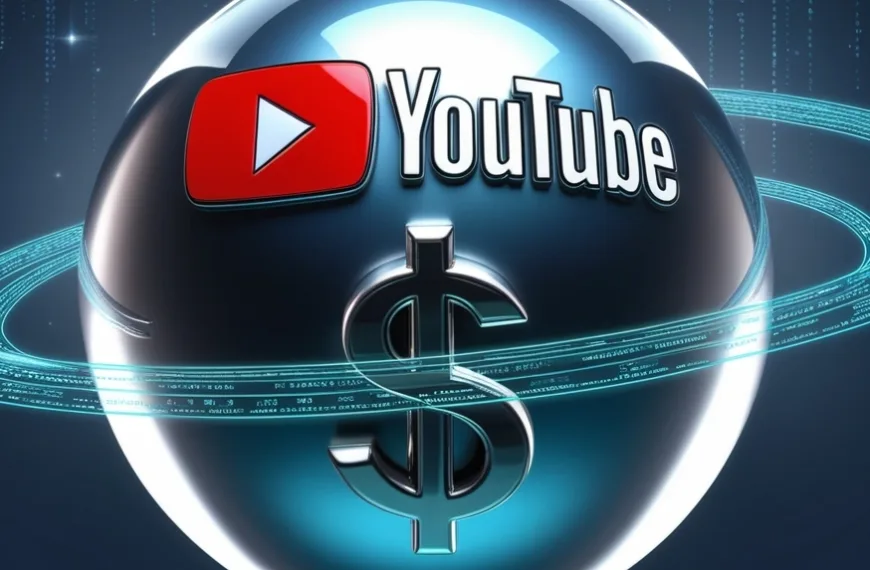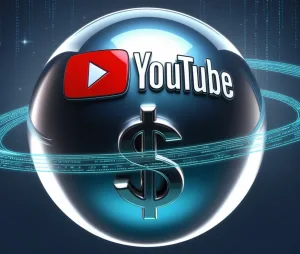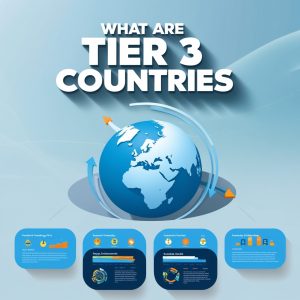TikTok has taken the world by storm. What started as a platform for short-form lip-sync videos has evolved into a global hub for creativity, community, and commerce. With over a billion active users worldwide, TikTok is not just reshaping the way people consume content – it’s also creating new opportunities for revenue generation for both the platform itself and its millions of creators. In this article, we explore how TikTok makes its money and how creators can tap into that flow and turn their videos into income.
Once known for lip-syncing teens and viral dances, TikTok has evolved into one of the most influential platforms in the digital world – and it’s not just a cultural force, but a financial one too. With over a billion users worldwide and an ever-expanding ecosystem of creators, brands, and businesses, TikTok has built a monetization engine that’s redefining how social media platforms generate revenue. From virtual gifts to sophisticated ad placements and a budding e-commerce network, the app is no longer just a space for entertainment – it’s a marketplace, a billboard, and, for many, a full-time job.
If you want to learn how TikTok makes money nowadays, and more importantly, how do creators – the lifeblood of the platform – get their share, stay with Igamingaff. We`ll break down TikTok’s revenue streams, the tools and programs available for creators to earn, and how user behavior and data fuel the entire model. Also we`ll take a look at what’s next for TikTok’s monetization strategy and how it may evolve in the coming years. Whether you’re a marketer, a creator, or just curious about how the app is making billions, this deep dive will give you the full picture.

TikTok’s Revenue and It`s Sources
TikTok’s explosive growth isn’t just making waves in culture – it’s making serious money. By 2025, TikTok is expected to pull in a massive $33.1 billion in ad revenue globally – with a huge chunk of that coming from the U.S. market alone contributing nearly $9.5 billion. That’s not just impressive – it’s transformative. In just a few short years, TikTok has gone from a niche app for viral videos to a digital marketing powerhouse. TikTok’s ad revenue has skyrocketed – going from just $2 billion in 2020 to a predicted $54 billion by 2027. That’s some serious growth. That kind of growth is rare in any industry, let alone in the constantly shifting world of social media. What’s fueling it? A perfect storm of expanding user numbers, particularly among Gen Z and Millennials, combined with TikTok’s smart move into social commerce. The platform has proven especially effective for industries that rely heavily on impulse buying and visual storytelling. In 2023 alone, tech brands spent over $2 billion on TikTok ads, with toiletries, cosmetics, fashion, and retail sectors not far behind. These companies aren’t just experimenting – they’re pouring billions into campaigns because they see real, measurable impact. While the pace of revenue growth is starting to normalize compared to the early boom years, the upward trajectory is far from over. For marketers and brands, this isn’t a trend – it’s a new reality. TikTok has earned its place at the center of the global advertising conversation, and all signs point to an even more profitable future.
TikTok makes money in all kinds of ways – some you’d expect, and others that are totally new to the game. Unlike some older social media platforms, TikTok has leaned into the full potential of its format and user base to build a diverse and evolving business model. Here’s a breakdown of the main sources of TikTok earnings from platform users.
Advertising
Just like other big-name platforms, TikTok makes most of its money from ads. The company offers a wide array of ad formats designed to integrate seamlessly into the user experience. These include:
- In-Feed Ads. Ads on the For You page blend right in with regular videos – most of the time, the only giveaway is the tiny “Sponsored” tag.
- TopView Ads. Premium ads that appear right after the app opens.
- Branded Hashtag Challenges. TikTok encourages users to engage with a brand through custom challenges, boosting exposure and engagement.
- Branded Effects. Custom filters or augmented reality (AR) elements sponsored by brands.
These formats are not only creative but highly engaging, with TikTok boasting some of the best ad completion rates in the industry. Brands love TikTok because its ad ecosystem is built around entertainment rather than interruption.
Virtual Gifts and TikTok Coins
Another major revenue stream comes from TikTok’s in-app currency system. Users can purchase TikTok Coins with real money and use them to buy virtual gifts. These gifts can be sent to creators during live streams, and creators can then convert them into Diamonds, which are redeemable for real-world currency.
TikTok takes a cut of these transactions – reportedly around 50% – but the system still presents a lucrative opportunity for popular streamers, especially those who build a dedicated and generous fanbase.
E-Commerce and Shop Integration
Shopping on TikTok is becoming more and more seamless, as the app keeps blending e-commerce right into the scroll. The TikTok Shop allows creators and brands to sell products natively within the app. Livestream shopping events, where influencers showcase products in real time, are becoming increasingly common, especially in Asia.
This not only opens another income stream for TikTok through transaction fees but also gives creators more tools to monetize their influence beyond traditional sponsorships.
Partnerships and Sponsored Content
TikTok works with brands on both direct partnerships and through its Creator Marketplace, where businesses can connect with influencers who align with their brand. These sponsored deals often involve:
- Product placements.
- Challenge promotions.
- Brand ambassadorships.
While TikTok doesn’t always take a cut of these private deals, its infrastructure facilitates the connection, and the platform benefits from the increased engagement and relevance these partnerships bring.
How Content Creators Can Make Money on TikTok
For a lot of creators, TikTok isn’t just a place to perform — it’s where they’re building real careers. There are multiple ways to turn creativity into TikTok creators income on the platform.
Creator Fund
TikTok launched its Creator Fund to support creators directly. Once eligible (based on follower count, video views, and adherence to community guidelines), creators can earn a share of the fund based on the performance of their content.
However, the payouts are modest – often just a few cents per thousand views – so the Creator Fund is more of a supplementary income source than a primary one.
Live Gifts and Diamonds
As mentioned earlier, creators can earn money during live streams through virtual gifts. Viewers send these gifts as a token of appreciation, and creators can convert them into Diamonds. This system encourages real-time interaction and rewards creators who build strong fan communities.
Sponsorship
Brand deals are still one of the biggest ways TikTok creators make serious money. If a creator has a dedicated audience and consistent engagement, brands are willing to pay handsomely for partnerships. These partnerships can be anything from a quick shoutout to a full-blown marketing campaign woven into a video.
Affiliate Marketing
Through TikTok’s new affiliate tools and third-party programs, creators can earn commissions by promoting products. They include links in their bios or videos, and when followers make purchases through those links, the creator gets a cut.
Merch and Product Sales
Plenty of creators go beyond content and turn themselves into brands – selling merch, digital downloads, or even launching their own books and online courses. TikTok’s short-form video format is perfect for teasers and promotions, driving traffic to external sales platforms.
How TikTok Uses User Data for Monetization
TikTok’s ability to personalize content is one of the key reasons for its explosive growth – and this is largely powered by data. Every like, scroll, share, and pause is tracked and analyzed by TikTok’s algorithm to better understand user preferences.
This rich data serves two main purposes:
- Enhanced Ad Targeting. TikTok uses behavioral data to deliver highly relevant ads. If a user watches a lot of fitness content, they’re more likely to see ads for workout gear or health supplements.
- Content Optimization. The platform uses engagement data to decide which videos to push to broader audiences. This not only increases user satisfaction but also ensures that ad placements happen on content that people actually watch and enjoy.
Sure, there are still big questions about privacy – especially from watchdogs in the U.S. and Europe – but TikTok is tweaking how it handles data and working to stay on the right side of the rules in its biggest markets.
The Future of TikTok Revenues and Trends: Predictions and Possible Changes
TikTok’s revenue model is still evolving, and the next few years are likely to bring even more diversification and sophistication.
- Growing E-Commerce Integration
TikTok is expected to double down on e-commerce. As Western audiences become more comfortable with in-app shopping (a trend already booming in China), TikTok could turn into a hybrid of entertainment and retail, with influencers driving direct sales.
- Subscription Models
We may also see more subscription-based features for creators – similar to YouTube’s memberships or Twitch’s subs. These could provide a more stable income stream for creators and reduce reliance on algorithms.
- Advanced Creator Tools
TikTok is rolling out more features to help creators monetize, including better analytics, editing tools, and monetization dashboards. This not only empowers creators but also makes the platform more attractive for professionals looking to diversify beyond Instagram or YouTube.
- Expansion of Ad Solutions
Expect TikTok to expand its ad solutions to small businesses and B2B sectors. Simplified ad creation tools, AI-generated content options, and regional targeting will make it easier for brands of all sizes to advertise effectively on the platform.
- Global Regulatory Challenges
However, with greater influence comes greater scrutiny. Governments around the world are increasingly questioning how TikTok handles data, content moderation, and misinformation. Regulatory challenges could affect how the platform operates in key regions, impacting revenue and strategy.
The future of TikTok revenue feels promising, but at the same time keeping up with TikTok trends can feel like trying to drink from a firehose – new challenges, sounds, and memes seem to pop up every minute. But if you step back from the chaos, there’s something deeper going on. TikTok’s 2025 “What’s Next” report cuts through the noise to highlight the bigger picture: cultural shifts that actually stick around and shape how people interact, express themselves, and connect with brands. It’s not about chasing every viral moment – it’s about tuning into what truly resonates with your audience and building strategies that grow with them.
One of the biggest takeaways for businesses is the idea of Brand Fusion: working with a variety of creators – not just mega influencers – to build real connections in niche communities. Today’s audiences are smart; they can spot an ad from a mile away. What they respond to is content that feels fun, relatable, and genuine. Think less polished commercials and more creator-led storytelling that feels like a conversation, not a pitch. Whether it’s a financial brand breaking down budgeting with humor, or a beauty company showing real skin and real stories, authenticity wins.
The report also dives into Identity Osmosis, a trend that’s all about aligning with what your audience truly cares about. Gen Z and Millennials especially are shifting away from traditional life milestones and instead focusing on mental health, personal growth, and self-expression. They’re building lives on their own terms, and they expect brands to meet them there. That means celebrating their wins – big or small – and creating content that reflects their values, not just sells a product.
And then there’s the Creative Catalysts trend, which reminds us that creating good content doesn’t have to be overwhelming. With tools like AI-assisted writing, remixing features, and quick-edit video apps, marketers can stay agile without reinventing the wheel every time. Refreshing old content to match a new trend or using templates that can flex with whatever’s trending can save time and boost relevance. It’s not about chasing every trend blindly – it’s about showing up with purpose and knowing when (and how) to join the conversation.
The basic message is clear: be consistent, be authentic, and be ready to evolve. Trends will come and go, but if brands stay true to their voice while adapting to what people care about, they won’t just ride the wave – they’ll help shape it.
Conclusion: Making the Most of TikTok’s Monetization Landscape
TikTok has transformed from a fun video app into a serious business platform. For the company itself, revenue comes from a mix of TikTok advertising, digital gifts, e-commerce, and partnerships. For creators, opportunities include everything from Creator Fund payouts to live gifts, brand deals, affiliate marketing, and even launching their own products.
The common thread? Engagement. Whether you’re a brand looking to advertise or a creator aiming to earn, success on TikTok hinges on authentic, engaging content that resonates with your audience.
As TikTok continues to grow and evolve, staying informed about new TikTok monetization tools and trends will be key. Whether you’re a solo creator or a global brand, now is the time to take TikTok seriously – not just as a social platform, but as a revenue-generating machine with staying power.
Read more: Top Gambling Affiliate Programs
